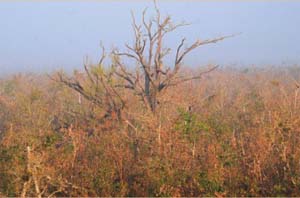Struck by cyclone Aila after Sidr, country braces for the next
 Amid increasing threats of climate change, Bangladesh today observes the fourth anniversary of cyclone Sidr, one of the worst natural calamities the country has experienced since its birth in 1971.
Amid increasing threats of climate change, Bangladesh today observes the fourth anniversary of cyclone Sidr, one of the worst natural calamities the country has experienced since its birth in 1971.
This year the day is being commemorated with special significance. The Climate Vulnerable Forum concluded its two-day conference in Dhaka yesterday ahead of the global climate conference in Durban, South Africa, on November 28.
Bangladesh went through a nightmare on November 15, 2007 with the storm ripping through the country’s south-western region at a wind speed of 223 kilometres per hour (kmph), the highest since the 1991 hurricane that had a wind speed of 225 kmph.
The cyclone claimed around 4,000 lives and affected about 8.5 million people. Around 1.2 million livestock were destroyed and standing crops on 2.4 million acres of land were damaged.
The overall economic loss caused by the cyclone was estimated at $1.7 billion, according to statistics of Oxfam Bangladesh, an international charity group.
In less than two years, another cyclone, Aila, hit the same region, causing almost similar sufferings to people. Crops were damaged, embankments destroyed, vast areas of land succumbed to salinity, people remained homeless — features that are likely to worsen as global warming continues to increase the deadly effects of natural disasters, including a rise in sea levels.
Bangladesh’s south-western region remains at the forefront of the vulnerable regions of the world. The situation gets worse when the authorities — both national and international — fail to agree on cutting carbon emission and mobilising funds to set up appropriate structures to permanently protect people from the onslaughts of disasters, and cannot develop crop varieties suiting the extreme weather or saline soil conditions.
“After the disaster, everyone rushed in with emergency aid. But the authorities are not coming ahead with real help to ensure a sustainable solution,” said Swapan Guha, executive director of Rupantor, an NGO working in the coastal zone.
There are only a few cyclone shelters compared to the requirement. Neither the donors nor the government is eager to build houses, which can protect coastal people from tidal surges, he noted.
“We’ve seen that embankments were repaired, though late after Aila. But these can get damaged any time. There has been no effort so far to build stronger and higher embankments that can prevent tidal surges,” mentioned Swapan.
He called for an assessment of all efforts made toward creating a disaster-free mechanism, post-Sidr and post-Aila, with a view to doing work necessary to ensure a sustainable solution aimed at minimising the impact of such calamities.
Courtesy of The Daily Star




















